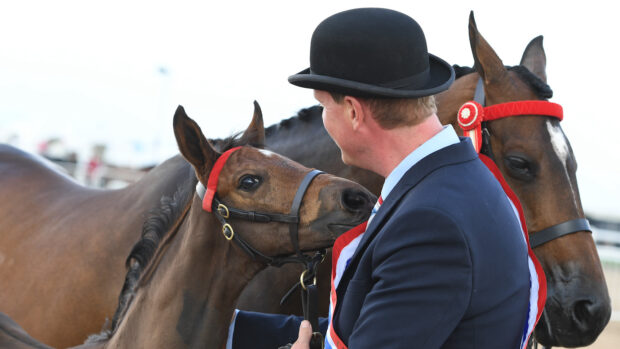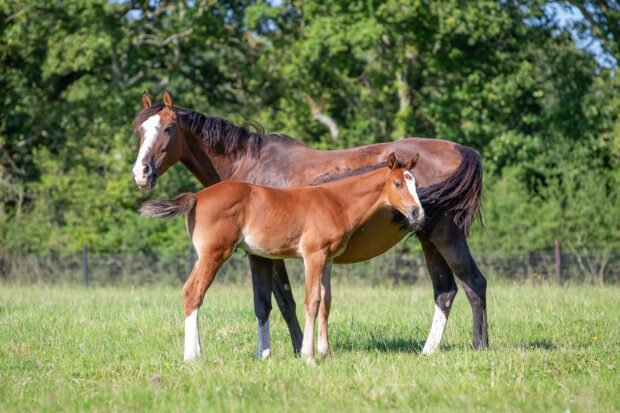View broodmares for sale
More articles on broodmares
When feeding a broodmare in the winter it is important to keep condition on, but what diet should be fed to avoid tying-up (azoturia)?
Horse: 17-year-old 16hh Thoroughbred
Feeding issue: broodmare, has been prone to tying-up during the winter in the past
Owner’s thoughts: “When in hard work, ‘Franky’ was prone to tying-up after 5-10min, especially if the weather was frosty or cold. She’s now expecting her second foal — her first was born last year.”
Work schedule: Franky usually competes in showing and affiliated dressage. At present, she is in light work, and at Christmas the workload will cease until her foal is weaned.
Current diet: 1kg alfalfa chaff; 300g (dry weight before soaking) unmolassed sugar beet; 1kg soaked bruised oats; oil; mineral and vitamin supplement, twice daily.
Suggested feed programme: Franky requires a diet to provide excellent nutrition during pregnancy, yet one that will not instigate an episode of tying-up.
Your feeding regime is relatively sound and relevant to Franky’s current workload. As her pregnancy progresses and you wind down her work, reduce the oat levels accordingly, cutting them out just as she stops work.
The foal is due in May, so she will not require a stud ration until the latter part of February. These interim months coincide with her peak period for tying-up, so feed her the same as you would any horse at maintenance level, concentrating on a high-fibre diet.
- Feed high-fibre cubes with a fibre content of around 20%. These will replace the oats and can be fed at a rate of 3kg a day. The supplement you are feeding replaces deficiencies in the oats, so continuing with it is optional.
- Continue feeding alfalfa chaff at a rate of 1kg a day.
- Oil — up to 200g a day.
For the final three months, slowly introduce a stud ration to replace the high-fibre cubes. Pay attention to the grass quality and quantity and, if necessary, increase the stud ration to coincide with foaling and early lactation (months one to three).
Bringing up baby
Foetal growth is most prolific during the final three months. Over feeding the mare on a stud ration prior to this time could cause obesity and possible problems at foaling. It may also initiate tying-up.
Requirements for the first six months of pregnancy differ little from general maintenance and the mare should be treated as such. Use low-energy rations as a base feed, topping up with a conditioning ration if she suffers weight loss. Nutritional requirements will double during the first three months of lactation and this should be taken into account.
This feeding case study was part of H&H’s feeding special issue, published on 12 October, ’06
View broodmares for sale near you
Looking for more articles on broodmares?



